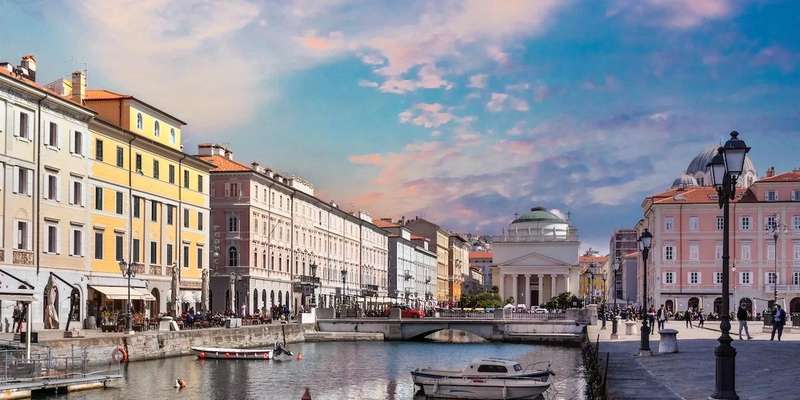- Home
- Useful Tips
- Combining a visit to Trieste...
Combining Trieste's cosmopolitan charm with Aquileia's ancient wonders in a single day seems impossible to many travelers. Over 60% of visitors to this northeastern Italian region end up sacrificing one destination due to poor planning, leaving them with regrets about missed UNESCO sites or rushed experiences. The challenge lies in navigating Trieste's layered history while allowing enough time for Aquileia's breathtaking mosaics – all against the clock of limited train schedules and seasonal crowds. Those who fail to optimize their route often waste precious hours in transit or arrive at key attractions when they're most congested, turning what should be a highlight into a stressful race against time. This tension between depth and efficiency creates real anxiety for culture-loving travelers determined to make every moment count.


Crafting your perfect morning in Trieste – what locals prioritize before the crowds arrive
The secret to a successful day begins with exploiting Trieste's early morning tranquility. While most visitors head straight to Piazza Unità d'Italia (which peaks around 11 AM), savvy travelers follow local shopkeepers' rhythm. Start at the Canal Grande as the morning light bathes the pastel buildings, then walk uphill to the Roman Theatre while it's still empty – this 1st-century treasure requires no tickets and offers unimpeded photography. A quick espresso at Torrefazione Trieste fuels you for the short walk to San Giusto Cathedral, where arriving before tour groups means having the stunning mosaics and city views all to yourself. Time-conscious travelers should note that the Castello di San Giusto doesn't open until 9 AM, making it better suited for afternoon return visits if time allows. This strategic sequence covers Trieste's historical trifecta in under three hours while avoiding the frustration of midday bottlenecks.
Smart transit choices – balancing speed and scenery en route to Aquileia
The journey to Aquileia presents a critical choice: the faster train-and-taxi combo or the more scenic but unpredictable bus route. Local commuters overwhelmingly prefer taking the 11:06 AM train to Cervignano (just 25 minutes), where pre-booked taxis wait to complete the 15-minute transfer to Aquileia. This guarantees arrival by noon – crucial for beating the lunchtime closure of the Basilica's mosaic floors. While buses directly from Trieste seem convenient, their infrequent schedule and multiple stops often result in arriving during peak heat and crowds. For those who prefer flexibility, regional trains run hourly, but afternoon return options become sparse. A little-known alternative is the seasonal bike rental at Cervignano station – cycling the flat 8km path along the ancient Via Gemina lets you stretch your legs while following a historic route, though this works best for travelers comfortable adding 90 minutes to their transit time.
Decoding Aquileia's treasures – a focused approach to the archaeological zone
Aquileia's sprawling ruins demand a targeted strategy to avoid overwhelm. The Basilica di Santa Maria Assunta deserves your undivided attention first – its 4th-century mosaic floor (the largest in the Western world) reveals astonishing details when sunlight streams through the upper windows around 1 PM. Local guides suggest spending 45 minutes here before others arrive post-lunch, using the free audio guide to understand the intricate biblical scenes. Next, walk five minutes to the Museo Archeologico Nazionale to see the curated highlights (don't miss the glass collection) rather than attempting to cover all 12,000 artifacts. If time remains, the River Port excavation offers a quiet glimpse into Roman engineering, though many visitors find the Forum area more impactful for its standing columns and palpable sense of history. This prioritized route ensures you experience Aquileia's essence without the fatigue that comes from trying to see every excavation site in limited time.
The golden hour return – making your evening in Trieste unforgettable
Returning to Trieste by 5 PM unlocks the city's magical transition from afternoon to evening. While day-trippers depart, locals emerge for their passeggiata along the waterfront. This is the ideal moment to visit Miramare Castle – its golden-hour glow and thinning crowds create a fairytale atmosphere, with the last indoor entry at 5:30 PM (6 PM in summer). Alternatively, cafe tables at Caffè degli Specchi become available as businesspeople leave, letting you savor a traditional aperitivo while watching Piazza Unità transform under evening lights. For dinner, backstreet trattorias like Buffet da Pepi serve quick yet authentic FVG specialties, their counter service perfect for time-conscious travelers catching late trains. Those with later departures can take the short funicular ride to Opicina for panoramic sunset views – a perfect bookend to a day that began with Trieste waking up beneath your feet.



